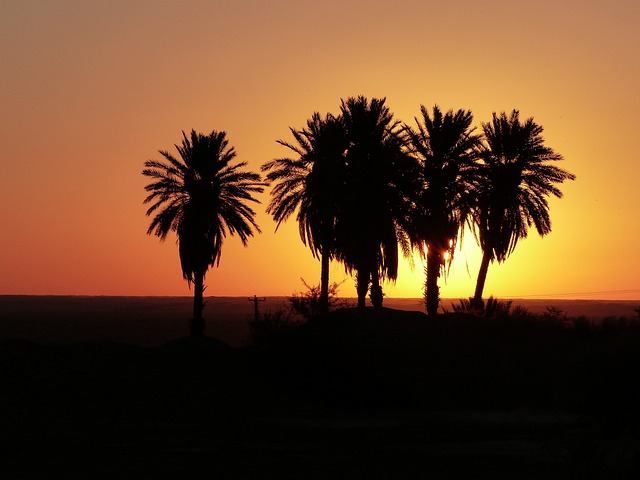The Urban Oasis: Transforming City Spaces into Retreats
In an ever-urbanizing world, the significance of green spaces has surged to the forefront of urban planning and community design. As cities grow, the hustle and bustle can often overshadow the need for tranquility and relaxation. Enter the concept of the “Urban Oasis”—beautiful, serene spaces nestled within the fabric of the city, providing a much-needed respite from the chaos and rejuvenation for body and spirit. This article delves into the importance, design principles, benefits, and real-world examples of urban oases that are transforming our city spaces into retreats.
The Importance of Urban Oases
Cities worldwide face various challenges, from air pollution and noise to social isolation and a lack of accessible outdoor spaces. Urban oases serve as vital solutions to these pressing issues. They promote mental well-being, enhance physical health, and provide essential habitats for urban wildlife. These spaces allow residents to reconnect with nature amidst concrete jungles, offering a place to unwind, socialize, or even engage in community gardening.
Furthermore, urban oases contribute to environmental sustainability. They improve air quality, manage stormwater runoff, and mitigate the urban heat island effect by introducing greenery into highly developed areas. These benefits have led city planners to increasingly prioritize the creation of urban oases in their development projects.
Design Principles for Urban Oases
Designing an urban oasis requires a thoughtful approach that considers multiple factors to create environments that resonate with the community. The following principles can guide designers in their quest to create effective urban retreats:
Inclusivity and Accessibility
An urban oasis should be accessible to all demographics, considering factors such as age, ability, and socioeconomic background. This means designing pathways suitable for wheelchairs, including seating areas for the elderly, and programming events that attract diverse groups. Accessibility extends beyond physical design; it also involves ensuring that these spaces are inviting and maintain a sense of safety for everyone.
Integration with Nature
Urban oases thrive on their connection to nature. Incorporating native plants, trees, and water features can create a micro-ecosystem that supports local wildlife while enhancing the aesthetic appeal of the space. Green roofs, vertical gardens, and naturalized landscapes can also help soften urban landscapes and enrich biodiversity.
Community Engagement
The success of an urban oasis often hinges on community involvement. Involving local residents in the planning and design process can cultivate a sense of ownership and pride in the area. Community gardens, art installations, and outdoor yoga classes can all foster teamwork, resulting in vibrant, lively spaces that invite participation and activity.
Flexibility and Adaptability
Urban oases should not be static; they must be designed to adapt to the changing needs and desires of their communities. Flexibility in space usage allows for a variety of activities such as farmers’ markets, outdoor movie nights, or daytime relaxation areas. By creating spaces that can accommodate different events and purposes, urban oases can remain relevant and vital parts of city life.
Benefits of Urban Oases
The benefits of incorporating urban oases into city landscapes are multifaceted and profound. As cities become denser, the need for these spaces becomes increasingly essential. Here are some key benefits that an urban oasis can bring:
Mental Wellness
Research indicates that spending time in green spaces can significantly reduce stress, anxiety, and depression. Urban oases provide a refuge for city dwellers, offering an environment that promotes relaxation and mental rejuvenation. Several studies show that exposure to nature can improve mood and cognitive function, reaffirming the critical role of these spaces in urban areas.
Physical Health
Being in nature motivates people to engage in physical activities such as walking, jogging, or practicing yoga. Urban oases can serve as venues for fitness classes or group exercises, encouraging healthier lifestyles. Moreover, green spaces have been linked to lower obesity rates, as accessibility to parks and oases can promote regular physical activity among residents.
Community Cohesion
Urban oases act as social hubs that bring together individuals from diverse backgrounds. By hosting events like cultural festivals or community art projects, these spaces foster connections and strengthen neighborhood ties. They can serve as venues for critical conversations on community issues, leading to increased civic engagement and collaboration.
Environmental Benefits
Urban oases are instrumental in addressing various environmental challenges. By improving air quality, supporting biodiversity, and managing stormwater runoff, these spaces can enhance the overall health of urban ecosystems. Green areas mitigate pollution and provide natural cooling effects, making cities more comfortable during hot weather and contributing to climate resilience.
Innovative Examples of Urban Oases
To illustrate the transformative power of urban oases, we can look at several exemplary projects from around the world. These spaces highlight the diverse approaches to creating tranquil retreats amid urban surroundings.
The High Line, New York City
The High Line stands as a prime example of an innovative urban oasis. Once an abandoned elevated railway, this linear park has transformed into a pedestrian-friendly space adorned with native plants, art installations, and stunning views of the city. Spanning 1.45 miles, the High Line provides a unique respite from the bustling streets below while contributing to local biodiversity and urban ecology.
Gardens by the Bay, Singapore
Gardens by the Bay is a breathtaking 101-hectare garden located in the heart of Singapore’s urban landscape. The site features the iconic Supertree Grove, a cluster of tree-like structures that provide shade while generating solar energy. With lush vegetation and a variety of themed gardens, this location offers a tranquil escape from the city while promoting environmental awareness and sustainability.
Millennium Park, Chicago
Millennium Park exemplifies how integrated urban spaces can become essential civic landmarks. Home to the iconic Cloud Gate sculpture and a variety of gardens and performance spaces, the park serves as a hub for arts and culture, encouraging community engagement. Its design incorporates numerous green areas, making it a popular spot for both residents and tourists seeking relaxation and recreation.
The Future of Urban Oases
As cities continue to evolve, the demand for urban oases will only increase. Architects, urban planners, and community leaders must collaborate to ensure that the needs of both residents and the environment are met. Innovations in design and technology can drive the creation of these urban retreats, ensuring they are sustainable, inclusive, and adaptable to future challenges.
Moreover, there is immense potential for community-led initiatives that focus on transforming underutilized spaces into vibrant oases. Whether through guerrilla gardening, parklets, or revitalizing vacant lots, individuals and grassroots organizations can spearhead the creation of urban oases, fostering a sense of belonging and ownership among residents.
Conclusion
Urban oases represent more than just patches of greenery in bustling cities; they embody a philosophy of life that values well-being, connection, and environmental stewardship. By transforming city spaces into retreats, we not only enhance the quality of urban life but also foster resilience against contemporary challenges. As we move forward, nurturing these oases will be crucial in creating cities that support both human and ecological health, offering sanctuaries where people can reconnect with nature, each other, and themselves.



